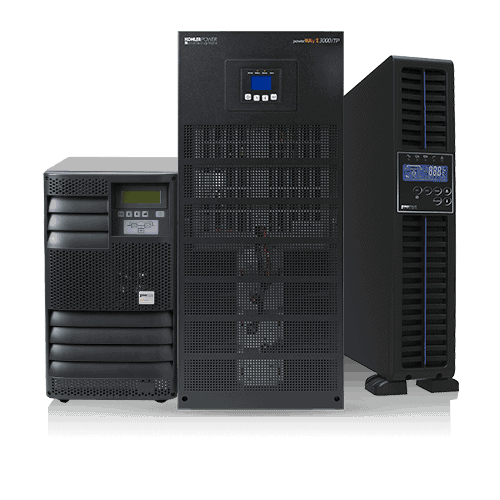Within a recent KOHLER Uninterruptible Power Ltd survey, 75% of the respondents reported a power outage within the last 12 months. Users do not expect this situation to improve, with 78% seeing UK power reliability as an increasingly major concern over the next ten years. In this environment, any organisation using ICT equipment for business-critical operations must use uninterruptible power supply (UPS) protection. As the UPS system’s ability to respond reliably on demand depends both on the quality of its hardware design elements and of its suppliers’ support strategy, it’s worth reviewing both these factors while planning a power protection policy.
Today, most UPS systems use transformerless technology instead of the earlier transformer types. Advantages include energy benefits from improved efficiency, reduced input current total harmonic distortion (THDi) and a higher input power factor. Both capital and operating costs are reduced. Audible noise is also reduced and battery life is enhanced.
Arguably the most important benefit, however, is the size and weight reduction yielded by a transformerless design. A 120kVA UPS, for example can be implemented as a 263 Kg unit with a 0.424 m² footprint instead of an installation with a 1.32 m² footprint weighing 1,200 Kg. This has enormous implications for flexibility and reliability, because it allows UPS systems to be configured from a set of rack-mounting modules rather than as monolithic floor standing units.
Modular rack-mounting configurations offer a set of reliability factors that, together, maximise power protection quality. Firstly, the modules’ transformerless design can reduce premature battery failure and increase mean time between failures (MTBF), due to the ease of adding additional modules to achieve redundancy. Secondly, a modular topology allows a sharply reduced mean time to repair (MTTR), because a faulty module can be simply ‘hot swapped’, eliminating lengthy on-site repair time. Increased MTBF and reduced MTTR together contribute to greatly increased availability, with up to ‘six nines’ or 99.9999% being possible.
Thirdly, a set of UPS modules can have redundancy built-in efficiently, providing resilience to failure.
For example an 80kVA critical load requirement could be served by a UPS rack containing five 20kVA modules; the load remains fully supported even if one module fails. And true system redundancy is possible, because each module can be designed to operate independently, with no common points of failure within the UPS configuration.
To realise modular UPS technology’s full power protection potential, it’s essential that users choose the right supplier together with the right hardware. In fact, over 90% of the survey’s respondents considered their UPS supplier’s maintenance and emergency call out support as important to their business as the hardware itself. Ultimately, the best strategy is to work with a supplier who becomes a power protection partner.
For example, many organisations now consider a generator as a desirable or even essential complement to their UPS within their power protection strategy. So, can the UPS supplier offer a matched UPS/generator pair? Alternatively, can they advise on matching of the UPS to another supplier’s generator? Equally, they should be able to discuss UPS sizing for the critical load. Although capacity, battery autonomy and redundancy must be appropriate for the load’s size and criticality, there is no benefit, and probably unnecessary cost, in providing excess capacity – especially as modular systems can be easily incremented later as needed.
The support strategy, like the hardware, should be realistically matched to the user’s needs. Initial site surveys ensure the right equipment is specified, while integration with related equipment and site access and installation logistics are planned. A preventative maintenance schedule ensures that batteries are kept in optimum condition and potential problems are identified and repaired before they cause failures. Remote monitoring and call out contracts can be negotiated to match the criticality of the load.
Clues about a prospective UPS supplier’s actual rather than claimed support capability and commitment can be gathered during early negotiations. How timely, detailed and accurate are their written and verbal responses? What is their product and project documentation like? Are they happy to attend onsite project meetings? Do they take health, safety, and environmental as well as quality standards seriously? Are their technicians well trained, and is their spares stock locally available? Are they willing and able to offer recent industry references?




